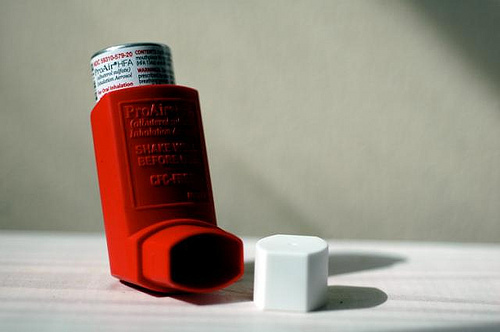Last Updated on June 26, 2025
Asthma affects millions, yet myths persist. Discover the truth about asthma triggers, pets, sports, and treatments. Learn how indoor mold can worsen symptoms and how to improve air quality.
Asthma is one of the most prevalent chronic conditions globally. Over 23 million adults and 9 million children suffer from asthma — and the number is rising. Despite its prevalence, misinformation continues to circulate. Here are six myths you should stop believing.
6 Asthma Myths Families Must Drop (and How Clean Air & Mold Control Help)
1. Asthma Is Just a Psychological Condition
False. Asthma is a chronic inflammatory disease of the airways influenced by genetic and environmental factors — not a mental condition. Proper treatment and trigger avoidance are essential for managing symptoms.
2. Smoking Does Not Trigger Asthma
Absolutely false. Tobacco smoke is a major asthma trigger. It not only worsens symptoms but also increases the risk of developing asthma, especially in children of smoking mothers.
3. Asthma Can Be Cured
Asthma is treatable but not curable. With proper medical guidance, medications, and environmental control, people with asthma can lead full, healthy lives. But symptoms may reappear if treatment is stopped.
4. Asthma Attacks Are Not Serious
In reality, asthma attacks can be life-threatening. They involve airway swelling and mucus buildup that block airflow, reducing oxygen intake and potentially leading to death if untreated.
5. People With Asthma Can’t Play Sports
Incorrect. Many athletes live with asthma. With pre-exercise medication and medical supervision, sports like swimming — which has humid air and less pollen — are even encouraged.
6. Asthma Patients Shouldn’t Have Furry Pets
This depends on the individual. If a person is allergic to pet dander, furry pets can be a problem. But many people with asthma keep pets safely by maintaining clean indoor air and managing allergens.
Mold, Indoor Air & Asthma: The Overlooked Link
| Key Point | Data Snapshot |
|---|---|
| Damp or moldy homes raise asthma risk by ≈53 % | Meta-analysis of 16 case-control studies pmc.ncbi.nlm.nih.gov |
| Fungal spores peak in summer & autumn, aligning with ER visits | 2024 Leicester spore-calendar study sciencedaily.com |
| Health Canada views any visible mold as a potential hazard | Residential IAQ Guideline canada.ca |
Quick Self-Check for Mold-Related Triggers
-
Sniff test: Musty odour after rain?
-
Look: Dark spots on bathroom ceiling or basement drywall.
-
HVAC: Dirty coils and drip pans grow mold that recirculates spores.
-
Humidity: Keep indoor RH at 30–50 % year-round. canada.ca
Fast Relief Steps
-
Run bath fan 30 min post-shower.
-
Fix leaks within 24 h.
-
Use mold-resistant paint & caulk in wet rooms on a five-year cycle.
-
HEPA vacuum weekly to capture spores and pet dander.
Pro Insight: A certified mold inspection pinpoints hidden damp zones before costly asthma flare-ups start.
FAQs
| Question | Answer |
|---|---|
| Does vaping trigger asthma like smoke? | Vaping aerosols still irritate lungs and can set off attacks, though less than cigarettes. Best practice: keep indoor air vape-free for kids and those with asthma. |
| Is bleach best for bathroom mold? | Health Canada advises against routine bleach use; 3 % hydrogen peroxide or dish-soap solutions clean small spots without harsh fumes. |
| Should I test my air for mold? | Health Canada doesn’t recommend routine air tests. Visible mold or moisture means fix the source and remove growth. |
Key Takeaways
-
Asthma myths delay proper care; evidence busts them.
-
Smoke, mold spores, and unmanaged humidity rank among top triggers.
-
Routine mold prevention—ventilation, leak repair, RH control—cuts attacks.
-
Certified inspections give hard data and a clear action plan.
Worried Mold Is Fueling Symptoms?
The Mold Guy Inc. provides IICRC-certified inspections and safe mold removal across the GTA.
📞 Call or book online for a same-week indoor-air assessment.
FAQs About Asthma and Mold
Q1: Can mold really trigger asthma attacks?
A: Yes. Mold spores are airborne irritants and common asthma triggers, especially in damp or poorly ventilated environments.
Q2: Is asthma more common in homes with poor indoor air quality?
A: Yes. Dust, mold, pollen, and smoke can all worsen respiratory conditions, increasing asthma incidence and severity.
Q3: What’s the best way to test if mold is affecting my asthma?
A: A professional mold inspection with air sampling can detect hidden mold and airborne spores affecting your indoor environment.
Q4: Can air purifiers help asthma symptoms?
A: High-efficiency particulate air (HEPA) purifiers can help reduce airborne allergens including mold spores, improving air quality for asthma sufferers.
Related posts:
- Buying a Home? Mold Facts Your Inspector Won’t Tell You + Prevention Tips
- Mold in Your Home: Understand, Prevent & Eliminate
- Mold Prevention Tips for Your Home – Moisture Control & Expert Advice
- Health Symptoms That Reveal Hidden Mold Growth in Your Home
- Common Factors That Facilitate Mold Growth In Your Home
- Home Kits vs. Professional Air Testing – Which Is Better?
- 3 Myths About Black Mold Debunked – Separating Fact from Fiction
- Interior & Exterior Mold Removal Agents: Best Practices & Tips
- How to Safely Remove Mold [DIY & Professional] – Mold Removal FAQs
- Bathroom Renovations Can Spark Attic Mold – How to Stop It?




